Abstract
Continuous (CW) and pulsed light were used for the noninvasive measurement of hemoglobin oxygenation in tissues. A dual wavelength method of continuous illumination spectroscopy used 760 nm (deoxyhemoglobin peak) and 800 nm (an oxyhemoglobin-deoxyhemoglobin isosbestic point) to measure the kinetics and extent of oxyhemoglobin deoxygenation in brains during mild ischemia/hypoxia. Absorption and scattering were modeled in an artificial milk/yeast blood system, which gave an exponential relationship between absorption and optical path length to a depth of 7 cm. Time-resolved spectroscopy (10-ps resolution) afforded a display of the times and distances of arrival of photons emitted by the cat brain in response to a 10-ps input pulse. The emitted photons rose to a peak in a fraction of a nanosecond and declined exponentially over a few nanoseconds. The half-time of exponential decay corresponds to photon migration over a distance of 4 cm. Exponential light emission continued for several more nanoseconds when the brain was encased by the skull, which plays a key role in prolonging light emission. The exponential decline of light intensity has a value [exp(-microL)], where L is the path length determined from the time/distance scale and mu is the characteristic of the migration of light in the brain. The factor mu is increased by increasing absorption, and mu' = epsilon C where epsilon and C are the Beer-Lambert parameters of extinction coefficient (epsilon) and concentration (C). Thus, deoxyhemoglobin can be quantified in brain tissues.
Full text
PDF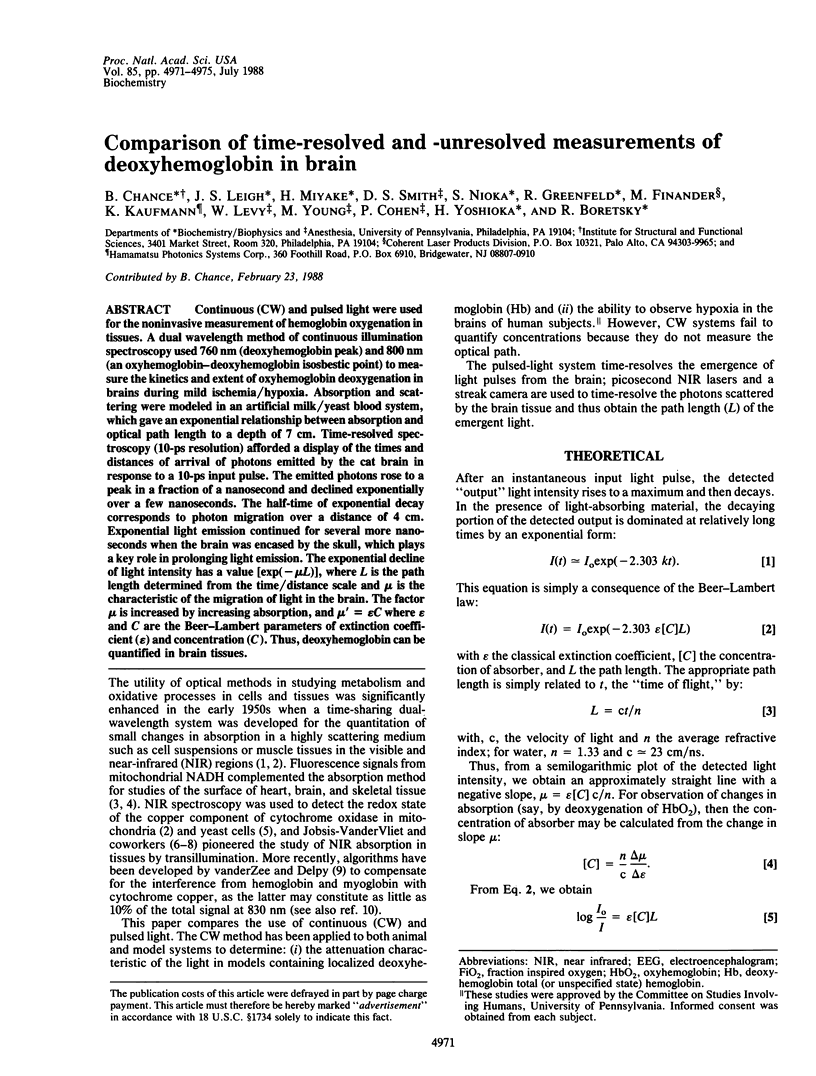
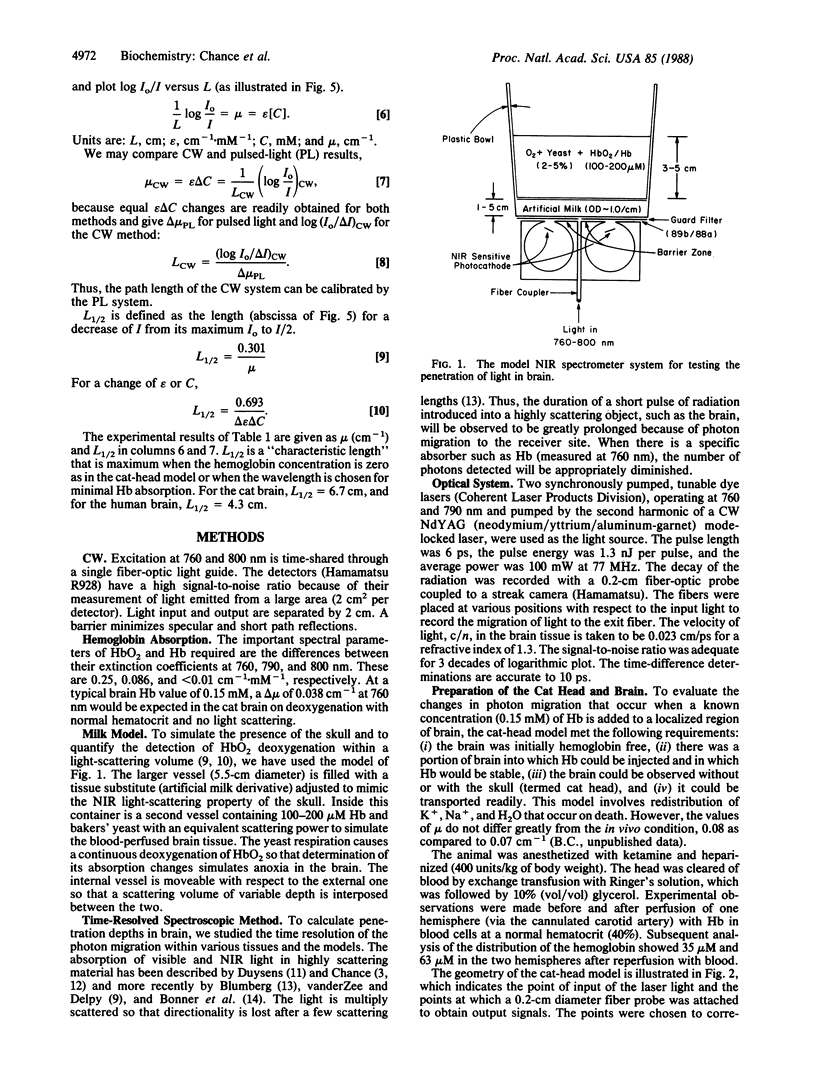
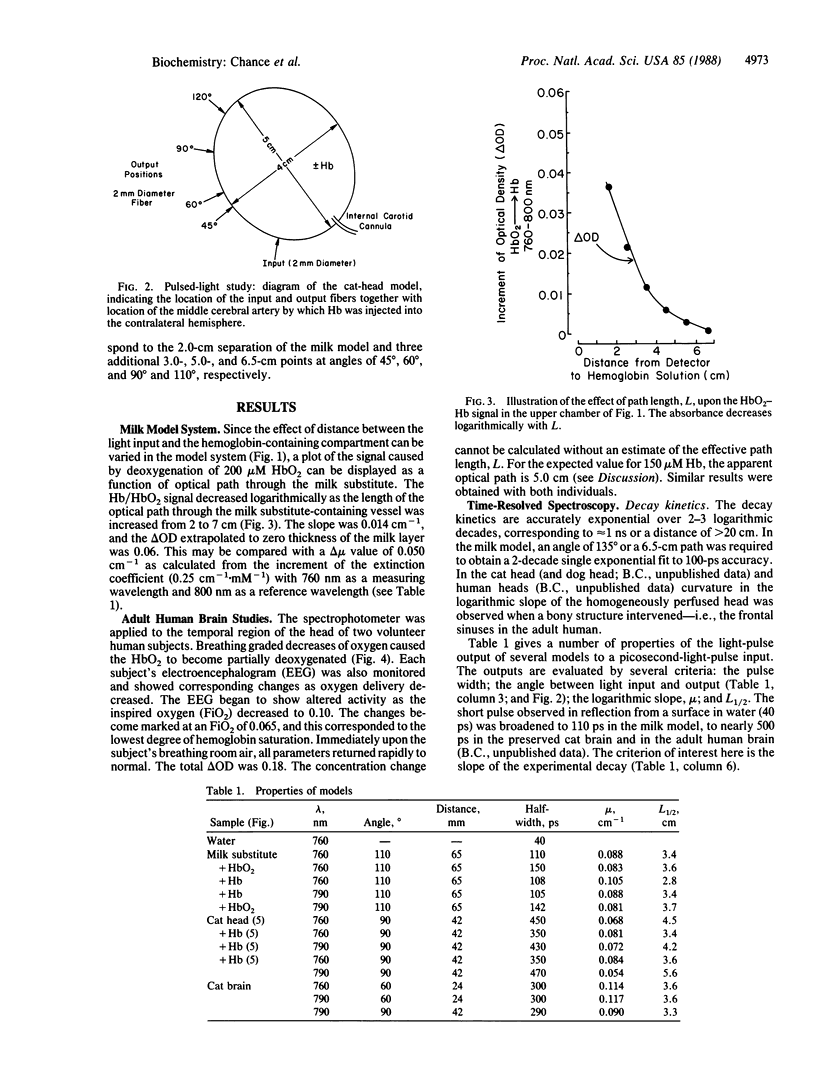
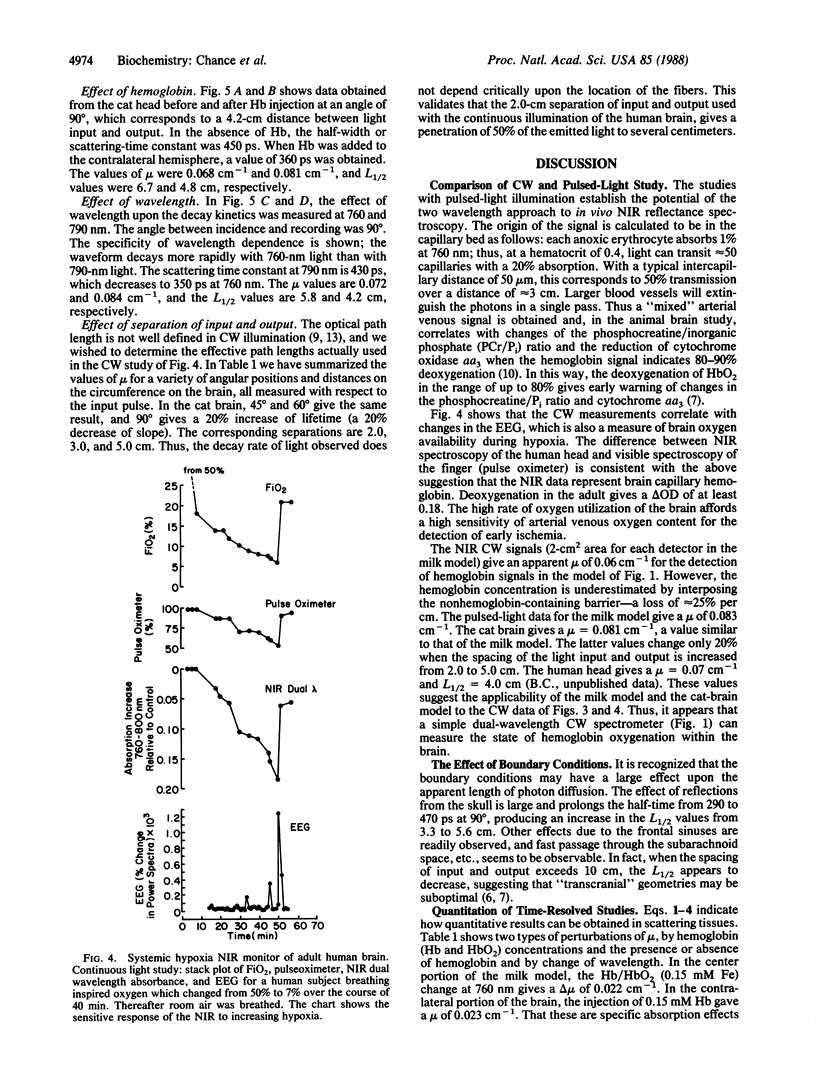
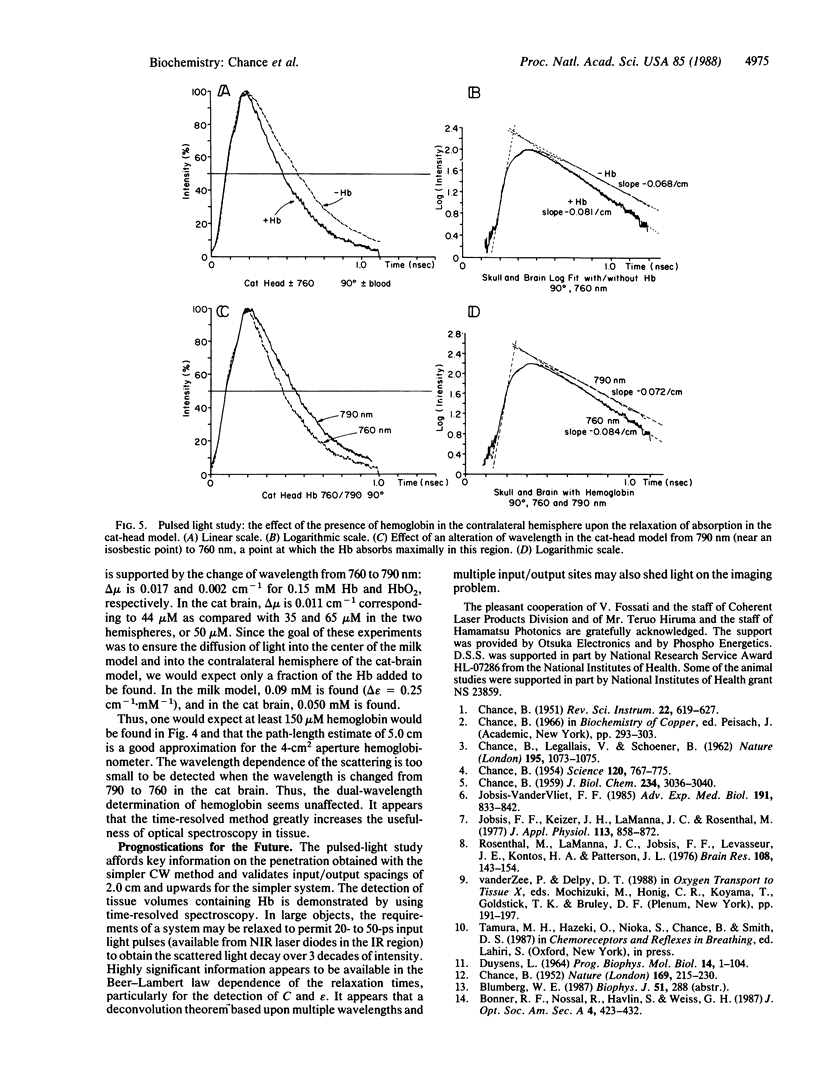
Selected References
These references are in PubMed. This may not be the complete list of references from this article.
- Bonner R. F., Nossal R., Havlin S., Weiss G. H. Model for photon migration in turbid biological media. J Opt Soc Am A. 1987 Mar;4(3):423–432. doi: 10.1364/josaa.4.000423. [DOI] [PubMed] [Google Scholar]
- CHANCE B., LEGALLAIS V., SCHOENER B. Metabolically linked changes in fluorescence emission spectra of cortex of rat brain, kidney and adrenal gland. Nature. 1962 Sep 15;195:1073–1075. doi: 10.1038/1951073a0. [DOI] [PubMed] [Google Scholar]
- CHANCE B. Phosphorylation efficiency of the intact cell. II. Crossover phenomena in bakers' yeast. J Biol Chem. 1959 Nov;234:3036–3040. [PubMed] [Google Scholar]
- CHANCE B. Spectra and reaction kinetics of respiratory pigments of homogenized and intact cells. Nature. 1952 Feb 9;169(4293):215–221. doi: 10.1038/169215a0. [DOI] [PubMed] [Google Scholar]
- CHANCE B. Spectrophotometry of intracellular respiratory pigments. Science. 1954 Nov 12;120(3124):767–775. doi: 10.1126/science.120.3124.767. [DOI] [PubMed] [Google Scholar]
- Jöbsis-Vander Vliet F. F. Non-invasive, near infrared monitoring of cellular oxygen sufficiency in vivo. Adv Exp Med Biol. 1985;191:833–841. doi: 10.1007/978-1-4684-3291-6_83. [DOI] [PubMed] [Google Scholar]
- Jöbsis F. F., Keizer J. H., LaManna J. C., Rosenthal M. Reflectance spectrophotometry of cytochrome aa3 in vivo. J Appl Physiol Respir Environ Exerc Physiol. 1977 Nov;43(5):858–872. doi: 10.1152/jappl.1977.43.5.858. [DOI] [PubMed] [Google Scholar]
- Rosenthal M., Lamanna J. C., Jöbsis F. F., Levasseur J. E., Kontos H. A., Patterson J. L. Effects of respiratory gases on cytochrome A in intact cerebral cortex: is there a critical Po2? Brain Res. 1976 May 21;108(1):143–154. doi: 10.1016/0006-8993(76)90170-0. [DOI] [PubMed] [Google Scholar]


